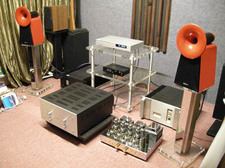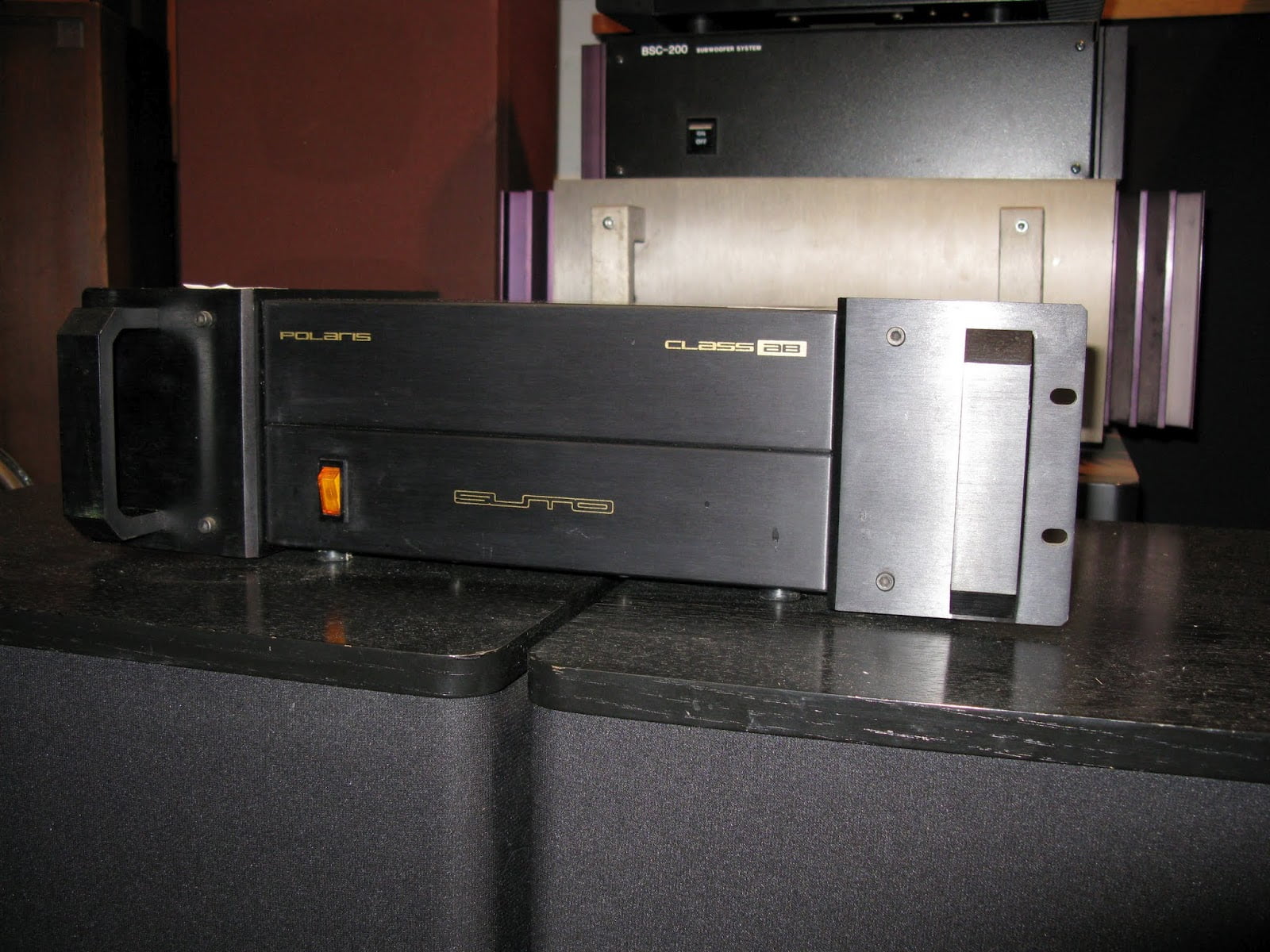It’s the time of year for saving money!
Okay, so following the advice in these articles on how to get the most for your Hi-Fi dollar, you’ve decided that what you want is a “High Intention” system – one that will grow and change as your budget and level of commitment changes and as new or different products come along to solve your Hi-Fi problems. You’ve also decided to dedicate a room for your system and have gone to the trouble to make sure that it is suitable, that it’s properly arranged, and that it has been properly acoustically treated to give you the very best possible sound. And you have also, (being one of us who believes that cables are an important determinant of the sound of your system) gone to the trouble of auditioning a goodly number of cables on a goodly number of components, in a goodly number of systems, and decided which ones you will use to give you the least “colored” foundation to which to add all the rest of your components and will best allow you to avoid the expense and effort of having to change cables every time you change any other system component. (Interestingly, even if you don’t believe that cables make a difference, you should still start with them (whichever ones you choose) as your “basis” component, and stick with them in as you grow and change your system. That way you’ll always have a consistent “sound” and, with your cables not, as you believe, affecting system performance in any way, you’ll still never need to change them as you change your system.)
 Once all that has been done, all that’s left is to buy and set up the equipment, put on a recording and sit back to enjoy some music.
Once all that has been done, all that’s left is to buy and set up the equipment, put on a recording and sit back to enjoy some music.
Which equipment, though, should you buy? And how much should you pay for it? Getting the most for your money is what this series of articles is all about, and I do have some thoughts and helpful hints to offer.
One of the most important things for you to keep in mind is that all High-Intention systems, not just yours, are constantly changing. Audiophiles and music lovers change their systems all the time, as their own personal circumstances change or as new toys and goodies come on the market to tickle their fancy or solve their real or imagined system problems. What that means is that if you are lusting after a Whizbang 9 preamp or a pair of Catapult Banshee loudspeakers, there may very well be somebody – maybe even somebody relatively nearby – who already has one or both of those things and, for whatever reason, is ready to “off” them to buy something else.
Good! You want to buy and he (the seller) wants to sell; it’s a perfect match! Buy what you want from him used but in good condition. You’ll both be happy; you’ll both have what you want; and think how much money you’ll save!
You can buy used hi-fi gear from any number of sources: A friend who has what you want and wants to part with it for whatever reason; a “private party” seller doing the same thing; a “bricks and mortar” hi-fi shop that may have taken the goods you want in trade; or from “on-line” or “in-print” (in Hi-fi or other publications) dealers (including the various “exchanges” or “marketplaces” who may not really be dealers at all, but simply allow the owners of equipment to sell it on their website for a fee).
 Each of these sources has potential advantages and disadvantages: Buying from a friend is almost always “as is”, with no guarantee of any kind unless you can negotiate one, but it does, assuming that your friend lives close enough, give you the advantages of actually hearing whatever it is before you buy it; having at least some clue of its history; and not having to pay for either shipping (just the packing costs for some items can be prohibitive) or sales tax, if applicable. The disadvantages are that, if you don’t also shop other sources, you might not get the very best price and, if there’s any difficulty during or after the transaction, you might lose a friend in the process.
Each of these sources has potential advantages and disadvantages: Buying from a friend is almost always “as is”, with no guarantee of any kind unless you can negotiate one, but it does, assuming that your friend lives close enough, give you the advantages of actually hearing whatever it is before you buy it; having at least some clue of its history; and not having to pay for either shipping (just the packing costs for some items can be prohibitive) or sales tax, if applicable. The disadvantages are that, if you don’t also shop other sources, you might not get the very best price and, if there’s any difficulty during or after the transaction, you might lose a friend in the process.
Buying from a private party on-line can be outright scary: Unless you know the seller or can somehow get believable referrals or testimonials from other people who have done business with him, you can find yourself in the same position as government negotiators trying to make a prisoner exchange at “Checkpoint Charlie” – neither side wants to release what they are holding first, in case the other side doesn’t release what they are holding at all. And even if, with nothing but a picture and a verbal description to go on (as must certainly be the case), you do send your money in advance to a faceless and utterly unknown seller in hopes that he will send you your desired product in return, there will likely be no guarantee at all that the item you get will be as promised, either in kind or condition; that it will be well or properly packed and shipped, or that you’ll have any recourse if it isn’t.
 Buying used gear from a local dealer with a real “brick and mortar” shop may cost a little more (including the payment of sales tax if applicable in your State), but can be well worth the extra cost, and I encourage you to consider it. For one thing, you will certainly be able to hear your specific desired product (the exact one, not just one like it) before you buy it – a distinct advantage in time, hassle, and up-and-back shipping costs, even if some other seller offers a money-back satisfaction guarantee. Buying from a dealer also has other advantages: You may get a warranty of some kind; the dealer may have a service department that can help you with problems even after that warranty has expired; and buying from your local dealer may help to establish a relationship between you and him that can be to your advantage when it comes time to buy or “try-out” other gear.
Buying used gear from a local dealer with a real “brick and mortar” shop may cost a little more (including the payment of sales tax if applicable in your State), but can be well worth the extra cost, and I encourage you to consider it. For one thing, you will certainly be able to hear your specific desired product (the exact one, not just one like it) before you buy it – a distinct advantage in time, hassle, and up-and-back shipping costs, even if some other seller offers a money-back satisfaction guarantee. Buying from a dealer also has other advantages: You may get a warranty of some kind; the dealer may have a service department that can help you with problems even after that warranty has expired; and buying from your local dealer may help to establish a relationship between you and him that can be to your advantage when it comes time to buy or “try-out” other gear.
Finally, there are the on-line or in-print dealers – everything from ebay to audiogon, to any number of others. These won’t allow you the opportunity to hear what you want before buying it, but may very well – just to protect their own reputation — give you the right to return products that are not as advertised and some kind of guarantee, either as part of the transaction or as a purchased extra, of reliability over some period of time. The biggest advantage, though, of dealing with them is the confidence that you won’t havwe a “checkpoint Charlie” situation: It you send them money, you will get your purchase or you will have recourse against them to get your money back.
 So much for where to buy used stuff; I’ll go into what to buy used (Or do you prefer the car dealer’s term, “pre-owned”?) and whether to buy it used or new next time.
So much for where to buy used stuff; I’ll go into what to buy used (Or do you prefer the car dealer’s term, “pre-owned”?) and whether to buy it used or new next time.
See you then.








